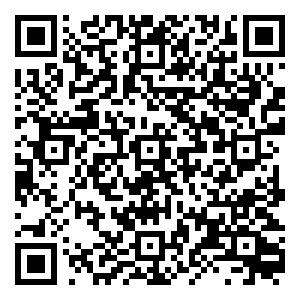Research on Hysteretic Behaviour of Coupled Steel Plate Shear Wall Structures Based on Coupling Ratio
-
摘要: 钢板剪力墙结构是一种以钢框架内嵌钢板为基本结构单元的抗侧力结构体系,利用连梁,将两片钢板剪力墙连接起来,形成联肢钢板剪力墙。连梁的引入,一是可使钢板墙的结构布置更灵活方便,有利于增加钢板墙结构的整体抗弯承载力和刚度,甚至组成抗侧效果更佳的钢核心筒结构体系;二是利用钢连梁进行耗能,增强结构的耗能能力。
本文对联肢钢板剪力墙的滞回性能展开了研究,通过ABAQUS有限元建模软件对已有联肢钢板剪力墙结构试验进行模拟,验证了模型的有效性。首先研究柱轴力与耦联比的关系,通过改变连梁高度及墙板厚度,得到10组不同耦联比的联肢非加劲薄钢板剪力墙结构模型,通过对这10组模型进行单调推覆分析,得到了耦联比随柱轴力之比的变化关系:框架边柱与内柱的轴力会随着耦联比的增大而接近;当耦联比小于0.6时,右侧钢板剪力墙内柱受拉,边柱受压;当耦联比大于0.6时,右侧钢板剪力墙内柱与边柱均受压。因为耦联比的增大是由于连梁对结构的耦联作用增强,而连梁可以传递轴力,耦联比越大即连梁耦联作用越强,其传递轴力能力就越强,所以可以分担边柱轴力,让柱3与柱4同时受压。耦联比较小时,倾覆弯矩主要由边柱轴力形成的力偶抵抗,耦联比增大,内柱轴力相应增加,起到抗倾覆作用,保护边柱。而理想状态下,边柱与内柱同时破坏。最后研究试件耦联比对联肢钢板剪力墙滞回性能的影响,通过改变连梁截面以及墙板厚度实现耦联比的变化,从而得到6个试件模型。通过拟静力分析来研究耦联比、连梁截面尺寸和墙板厚度对联肢钢板剪力墙结构承载力、延性、刚度退化、耗能能力及破坏模式等方面的影响。研究表明,当耦联比在0.4~0.6之间时,连梁与墙板可发生充分的剪切屈服,边柱的柱端塑性铰最后出现,诱发结构破坏。钢连梁能够很好地参与结构耗能,故将“钢板剪力墙-框架”抗侧力体系改进为“钢板剪力墙-钢连梁-框架”抗侧力体系。Abstract: Steel plate shear wall structure is a kind of anti-side force structural system that uses steel plates embedded in steel frames as the basic structural unit. Using connecting beams, two steel plate shear walls are connected to form a joint steel plate shear wall. The introduction of connecting beams can firstly make the steel plate wall structure more flexible and convenient, which is beneficial to increase the overall bending capacity and rigidity of the steel plate wall structure, and even form a steel core tube structure system with better lateral resistance. The second is to use steel coupling beams to dissipate energy and enhance the energy dissipation capacity of the structure.
In this paper, the hysteretic behavior of the jointed steel plate shear wall was studied. The existing experiments were simulated by ABAQUS finite element modeling software. The validity of the model was verified by comparing the results. First, by changing the height of the connecting beam and the thickness of the wall plate, 10 sets of steel plate shear wall models with different coupling ratio (CR) were obtained, and a single push analysis was performed to obtain the relationship between the CR and the axial force ratio of the column. The axial force of the frame side column and the inner column will approach as the CR increases. When the CR is less than 0. 6, the inner column of the right steel plate shear wall was stretched and the side column was compressed. When the CR is greater than 0. 6, the inner column and side column of the right side steel plate shear wall were compressed. Because the increase in CR is due to the enhanced coupling effect of the coupling beam on the structure, and the coupling beam can transmit axial force, the greater the CR, the stronger the coupling effect of the coupling beam, and the stronger its ability to transmit axial force. Therefore, the axial force of the side column can be shared, and the column 3 and the column 4 can be compressed at the same time. When the CR is small, the overturning moment is mainly resisted by the coupling formed by the side column axial force. As the CR increases, the inner column axial force increases correspondingly, which can resist overturning and protect the side column. In an ideal state, the side column and the inner column are destroyed at the same time. Then, in order to study the influence of the CR on the hysteretic performance of the joint steel plate shear wall, the CR was changed by changing the coupling beam section and the thickness of the wall panel, and six specimen models were obtained. The effect of the CR, coupling beam section size and wall thickness on the bearing capacity, ductility, stiffness degradation, energy dissipation capacity and failure mode of the joint steel plate shear wall structure was studied through pseudo-static analysis. The research shows that when the CR is between 0. 4~0. 6, the coupling beam and the wall panel can produce sufficient shear yield. The plastic hinge at the end of the column finally appeared, causing structural damage. Steel coupling beams can participate in the energy dissipation of the structure well, and the "steel plate shear wall-frame" anti-lateral force system has been improved to the "steel plate shear wall-steel coupling beam-frame" anti-side force system.-
Key words:
- thin steel plate shear wall /
- coupling ratio /
- coupling beam /
- pseudo-static analysis
-
樊春雷. 钢板剪力墙结构基于抗震性能的抗震设计研究[D]. 西安:西安建筑科技大学,2014. 王迎春. 薄钢板剪力墙在压弯剪作用下承载力的试验与理论研究[D]. 西安:西安建筑科技大学,2011. 郝际平, 郭宏超, 解崎. 半刚性连接钢框架-钢板剪力墙结构抗震性能试验研究[J]. 建筑结构学报, 2011, 32(2):33-39. 王迎春, 郝际平,李峰,等. 钢板剪力墙力学性能研究[J]. 西安建筑科技大学学报, 2007, 39(2):181-186. 陈国栋, 郭彦林,范珍,等. 钢板剪力墙低周反复荷载试验研究[J]. 建筑结构学报, 2004, 25(2):19-27. 陈云涛, 吕西林. 连肢剪力墙抗震性能研究-试验和理论分析[J]. 建筑结构学报, 2003, 24(4):25-34. 伍云天,李英民,张祁,等. 美国组合联肢剪力墙抗震设计方法探讨[J]. 建筑结构学报,2011,12(32):137-144. 石韵. 含型钢边缘构件高层混合连肢墙结构的抗震性能及设计方法研究[D]. 西安:西安建筑科技大学,2013. Borello D J, Fahnestock L A. Design and testing of coupled steel plate shear walls[C]//Structures Congress. 2011:736-747. Borello D J, Fahnestock L A. Behavior and mechanisms of steel plate shear walls with coupling[J]. Journal of Constructional Steel Research, 2012, 74(6):8-16. Borello D J, Fahnestock L A. Seismic design and analysis of steel plate shear walls with coupling[J]. Journal of Structural Engineering ASCE, 2013, 139(8):1263-1273. Borello D J. Behavior and large-scale experimental testing of steel plate shear walls with coupling[D]. Urbana, Illinois:University of Illinois at Urbana-Champaign, 2014. Wang M, Borello D J, Fahnestock L A. Boundary frame contribution in coupled and uncoupled steel plate shear walls[J]. Earthquake Engineering & Structural Dynamics, 2017, 46(14):23552380. Li C H, Tsai K C, Chang J T, et al. Cyclic test of a coupled steel plate shear wall substructure[J]. Earthquake Engineering & Structural Dynamics, 2011, 41(9):1277-1299. Pavir A, Shekastehband B. Hysteretic behavior of coupled steel plate shear walls[J]. Journal of Constructional Steel Research, 2017, 133:19-35. -

 点击查看大图
点击查看大图
计量
- 文章访问数: 396
- HTML全文浏览量: 95
- PDF下载量: 16
- 被引次数: 0




 登录
登录 注册
注册


 下载:
下载:

